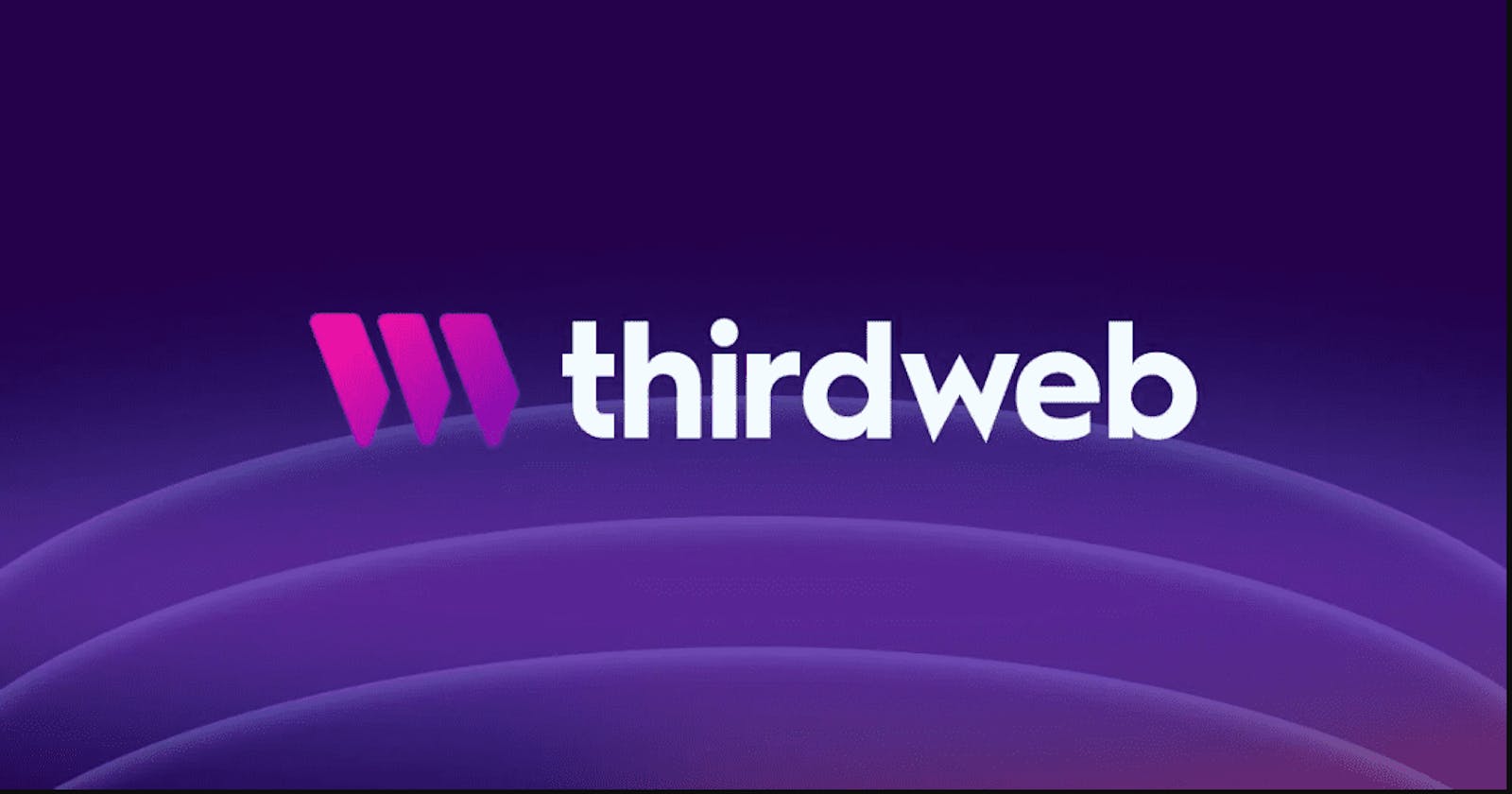Introduction:
Smart contracts are the foundation of many decentralized applications (dApps). They are self-executing contracts that run on a blockchain and can be used to automate a variety of tasks.
Thirdweb is a platform that makes it easy to create and deploy smart contracts. It provides a variety of tools and services that can help you get started with dApp development, including:
A smart contract editor that makes it easy to write and deploy smart contracts in Solidity.
A dashboard that allows you to manage your smart contracts and track their activity.
A library of pre-built smart contracts that you can use to get started quickly.
In this blog post, you will get to know how to create and deploy a smart contract with the help of Thirdweb.
Prerequisites:
Before you begin, you will need to have the following prerequisites:
A MetaMask wallet.
Some ETH to pay for gas fees.
A basic understanding of Solidity.
Creating a Smart Contract
To create a smart contract with Thirdweb, you will need to use the Thirdweb smart contract editor. The editor is a web-based IDE that allows you to write and deploy smart contracts in Solidity.
To open the editor, go to the Thirdweb website and click on the "Smart Contracts" tab. Then, click on the "Create New Contract" button.
The editor will open with a blank contract. You can now start writing your contract by adding some code to the constructor function. The constructor is the function that is called when the contract is deployed.
For example, the following code creates a simple contract that stores a number:
Code Snippet
contract MyContract {
uint256 public number;
constructor(uint256 initialNumber){
number = initialNumber;
}
}
Once you have written your contract, you can deploy it by clicking on the "Deploy" button.
Deploying a Smart Contract
When you deploy a smart contract, Thirdweb will compile your contract code and upload it to the blockchain. It will also create a dashboard for you to manage your contract and track its activity.
To deploy your contract, you will need to provide some ETH to pay for gas fees. The amount of gas fees required will depend on the complexity of your contract.
Once you have provided the gas fees, Thirdweb will deploy your contract to the blockchain. You can then view your contract on the dashboard.
Conclusion
In this blog post, we learned how to create and deploy a smart contract with Thirdweb. Thirdweb is a great platform for dApp development, and it makes it easy to create and deploy smart contracts.
If you are interested in learning more about Thirdweb, I recommend you visiting the Thirdweb website. There you will find a variety of resources, including documentation, tutorials, and blog posts.
I hope this blog post was helpful. If you have any questions, please feel free to ask me.
Here is some Additional Information in case you'd need it:
Smart contracts are written in Solidity, a programming language that is specifically designed for writing smart contracts.
Thirdweb also provides a library of pre-built smart contracts that you can use to get started quickly.
Thirdweb is a relatively new platform, but it has quickly become a popular choice for dApp development.
Tips for Writing Smart Contracts
Keep your contracts simple and easy to understand.
Use comments to explain your code.
Test your contracts thoroughly before deploying them.
Use a secure development environment.
Be aware of the gas costs associated with your contracts.
I hope these tips help you write smart contracts that are secure and efficient.
